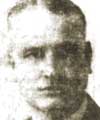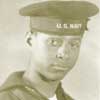Particpant Profiles
J. Walter Griffin
The Columbia police chief, 70 years old in 1946, issued the order for officers to surround the black section of town after James Stephenson was arrested and released. At the trial, Griffin testified for the prosecution, but on cross-examination acknowledged that black leaders Julius Blair and James Morton were men of “peace and quietude.”
Jacob McGavock Dickinson, Jr.
The governor’s office ordered the Tennessee State Guard, headed by Major General Dickinson, to Columbia to maintain order. He mobilized nearly 800 officers and enlisted men, but only about 200 were in town when the state highway patrol raided the black section of town.
Joe Ingram
 A circuit court judge for 40 years, Ingram presided over the
A circuit court judge for 40 years, Ingram presided over the
trial of the black men charged after the Columbia riot. Some
of early decisions on motions seemed designed to work
against the defense, but he became more thoughtful and fair.
Julius W. Blair
Blair, a black businessman, stood his ground during and after his community was invaded by the Tennessee Highway Patrol. He was one of the men who helped obtain the release of James Stephenson to protect him from a growing white mob.
Saul Blair
Julius Blair’s son, along with other black men, got James Stephenson safely out of town after his release. Like his father, he was resolute in the trial, refusing to name any black men he had seen on the streets the night of the raid.
James J. Underwood
 Maury County’s sheriff quickly called the governor for assistance after
Maury County’s sheriff quickly called the governor for assistance after
shooting erupted in Mink Slide and the presence of groups of armed
white men had all the potential for rioting. While his grand jury
testimony helped secure indictments, his truthfulness at trial
also supported the acquittals.
Lynn Bomar
Bomar, commissioner of the Tennessee Highway Patrol and commissioner of safety, tried to acquire weapons from the National Guard to arm what was becoming a white mob in Columbia. Sources suggest that he was “excited” and “bullying,” and his testimony for the prosecution showed deep racism.
Vincent Sheean
The NAACP had to struggle to get national press coverage of the Lawrenceburg trial. Once Sheean was convinced to come, he was hooked, and he wrote: “The nation … has shown no sign of interest in a case which goes to the roots of our national structure.” When he died in 1975, the New York Times and the Washington Post noted his passion against injustice.
Z. Alexander Looby
Looby, of Nashville, was one of three lawyers hired by the NAACP to represent the blacks charged with murder and attempted murder in Columbia in 1946. His legal defense, along with that of the other two lawyers, Maurice Weaver and Thurgood Marshall, helped acquit the defendants on trial in Lawrenceburg.
Maurice Weaver
The regional NAACP office in Nashville asked Weaver, a white attorney, to go to Columbia to get a fair and impartial version of what happened from February 25-28. He later joined Z. Alexander Looby and Thurgood Marshall, both black, in defending the men who were indicted.
James Morton
Morton, who owned a funeral parlor in the black community, aided Julius Blair in Stephenson’s release from jail. Although some blacks felt he was aloof in his business success, he was militant and defensive of his community when the highway patrol arrived, and he urged support for Stephenson among other black business owners.
Paul Bumpus
 As district attorney general, it was up to Bumpus to orchestrate
As district attorney general, it was up to Bumpus to orchestrate
the grand jury hearing that ultimately indicted 31 blacks and four
whites on charges related to the Mink Slide shootings. In the trial,
he presented a narrow view of what happened, fueled by his
training in the white legal establishment, which was usually
successful in cases involving race. This time, it did not ring
true with the jury.
Leon Ransom
Ransom, a professor of law at Howard University, had represented black clients in several Southern towns before the Columbia cases. After the verdicts were handed down, it was Ransom who immediately appealed the two convictions, which led to the state’s decision to end the case, freeing the two from further prosecution.
Thurgood Marshall
While most Americans know Marshall as a justice of the Supreme Court, he had significant victories as a black attorney in the 1940s and 1950s. In 1946, he was head of the legal arm of the NAACP, which brought him to the defense of those charged in Columbia.
James Stephenson
In early 1946, Stephenson was due to return from his service with the Navy in the Pacific. He was with his mother at Castner-Knott, a local department store, to straighten out a problem with charges and poor repairs on the family’s radio. A white repairman struck him and he hit back, setting in motion the events that led to the “Columbia Riot of 1946.”

